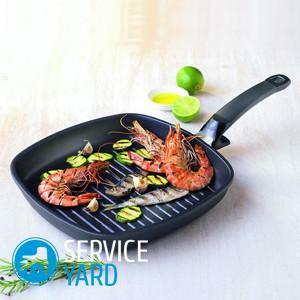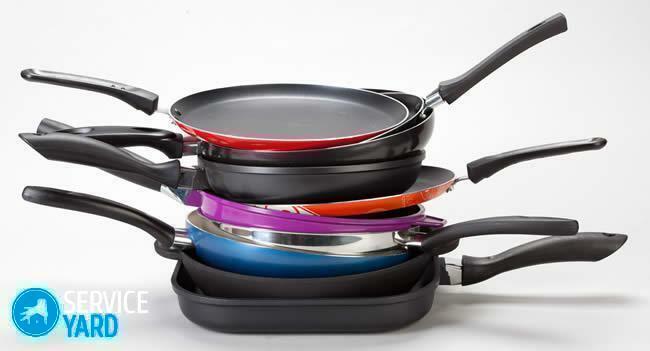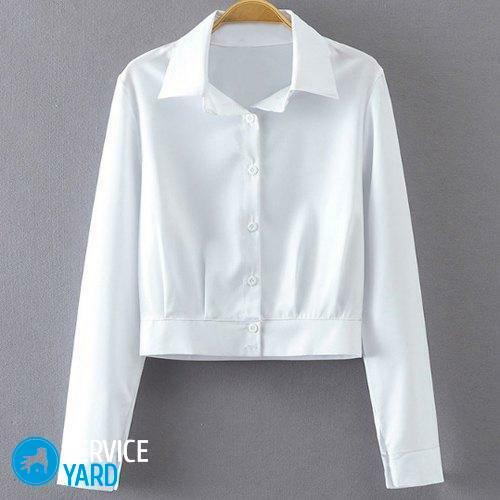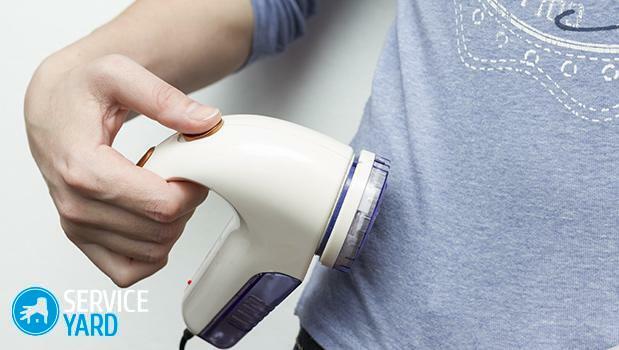
- Which material should I choose from the frying pan?
- Frying pan: which one to choose?
- Each plate its own frying pan
It is impossible to imagine any kitchen without a frying pan. In this bowl and fry, and stew, and bake. A lot of culinary masterpieces would be very difficult to create, if the frying pan was not invented. But improperly selected dishes can turn into a nightmare for the hostess, when the dishes burn, unevenly browned or get a foreign taste. That's why it's so important to know how to choose a frying pan correctly.
to the contents ↑Which material to choose from?
Now cookware for frying is made of different materials and with a variety of coatings. In order not to get lost in this variety and choose the frying pan that you need, let's look carefully at the pros and cons of each option.
Cast-iron frying pan
This is a classic of all time, which still does not lose its relevance. Everyone saw in his grandmother's kitchen a heavy fried pan for baking pancakes. Advantages:
- It is heated gradually and evenly, therefore it is perfect for dishes that require long heat treatment of products.
- Can be heated to high temperatures without producing harmful chemical elements and does not deform.
- Cast iron has a porous structure, due to which a natural non-stick layer is formed, - food on such a frying pan practically does not burn.
Important! Immediately after buying dishes from cast iron to cook something in it will not work. First cast iron frying pan need to be burned. To do this, wash the dishes and dry them thoroughly. Then grease and burn on a small fire or in the oven for several hours.
- You can use forks and metal blades for mixing.
- Not afraid of acids. You can calmly prepare dishes with the addition of vinegar or citric acid.
- The ribbed inner surface of the bottom, made in the form of a cage, allows you to cook meat as a grill.
- Even if you overexposed the dish and it burnt, it is very easy to remove the remnants of food.
Disadvantages:
- Pretty heavy. If you are looking for which frying pan is best for baking pancakes, then pay attention to other options - frying delicate dessert on cast-iron dishes can turn into real fizuzhazhneniya for pumping.
Important! Do not look for an easy cast-iron frying pan. The minimum thickness of the bottom should be 4 mm.
- Despite its impressive appearance, cast iron is a fairly fragile material. This frying pan can crack when falling.
- In cast iron products, you can not store food - after cooking it should be immediately shifted.
Operational Features:
- Do not use special detergents for cleaning cast iron dishes - so you will damage the natural non-stick layer. It is best to use such frying pans after use just rinse with warm water and wipe dry.
- Cast iron from moisture can rust, so do not leave dishes with water drops on the walls. And for storage, choose a dark and dry place.
Frying pan made of stainless steel
Until recently, stainless steel cookware was a dream of almost all housewives - its presence in the kitchen was a sign of consistency. And this is an explanation, because such pans have a number of advantages.
Advantages:
- Does not react with various ingredients. Cook in such a frying pan you can do anything.
- You can store food in the same container in which it was prepared.
- Does not rust.
- Do not change the taste of products. Many famous chefs decided for themselves what kind of frying pan it is best to choose by choosing stainless steel casting dishes.
- Not afraid of metal cutlery.
- Long-lasting material.
Disadvantages:
- If you overheat a frying pan without food, colored stains may appear on it.
- Food often burns.
- Stainless steel does not conduct heat well, therefore the bottom of such a pan can be heated unevenly.
Important! Many manufacturers began to produce multi-layer frying pans. To do this, a layer of aluminum or copper is sealed between the two layers. This allows to improve the thermal conductivity of such dishes, but at the same time to preserve the dignity of stainless steel.
Usage features:
- First, warm the oil well in a stainless steel frying pan, and then put the products.
- Do not put a lot of food at the same time - the temperature of the dishes will drop sharply and the products will start to burn.
- Stainless steel has a heating inertia - consider this when cooking. To get a ruddy crust on the meat, after turning off, leave the pieces in the frying pan.
Aluminum frying pan
If you are thinking about which frying pan is best for a picnic or a hike, then you can come up with lightweight aluminum dishes.
Advantages:
- Small weight of a frying pan.
- Heats up quickly.
- Low cost.
Disadvantages:
- Aluminum is highly prone to scratches from metal appliances and brushes.
- If overheated, it can deform.
Important! In order to serve an aluminum frying pan for a long time, you should buy casting utensils with a bottom thickness of at least 6 mm. Stamped products are generally better avoided.
- Products are very often burned.
- It is difficult to select the desired heating mode, since aluminum has a high thermal conductivity and is sensitive to minimal changes in fire intensity.
- Sensitive to acidic and alkaline conditions.
Important! Given these nuances, for a constant cooking of all the preferred dishes at home, such a frying pan is not very suitable. Can be present only as an auxiliary - for specific purposes.
Important nuances:
- If you decide to purchase an aluminum pan with Teflon coating, pay special attention to the quality and thickness of the metal. In case of deformation of the dishes from overheating, the inner layer will become unusable.
- Do not use abrasive powders and brushes to clean the dishes from aluminum. In this case, vinegar or oxalic acid will come to the rescue.
Copper frying pan
A copper frying pan will no doubt decorate any kitchen. Many chefs create their masterpieces in such yellow-red dishes. If you think which frying pan is better to choose for a gift, then look specifically at the copper. However, for such dishes you will have to pay a decent amount.
Advantages:
- Allows you to adjust the temperature well, as the copper quickly heats up and cools.
- Heat is distributed evenly.
- Durability.
- Beautiful appearance.
- Food prepared in such a frying pan is stored longer, since copper has antibacterial properties.
Disadvantages:
- For cooking in such a frying pan you need a certain skill.
- It is quite difficult to take care of the dishes, since copper is oxidized in a moist environment.
- In a completely copper pan, you can not prepare acidic foods, since they react with metal and can harm your health.
Important! To prevent oxidation of copper, the inside of the cookware is often covered with stainless steel or tin.
- In a modern kitchen, a copper frying pan is more a decoration than a dish for daily cooking.
- High price.

Operation Features:
- The copper pan should never be cleaned with ordinary dishware. In shops there are special means for such material. But many users note that the old "grandmother's" tools do not get any worse, for example, you can use salt and lemon.
- For cooking, use only wooden spatulas and spoons.
- Do not pour boiling water into a dry container.
- Salt dishes cooked in a copper frying pan, after boiling the liquid or before serving.
Frying pan: which one to choose?
The quality of food preparation largely depends not only on the material of the product, but also on the inner coating. Therefore, going to the store for a new assistant, it is important to know how to choose a pan with non-stick coating.
Teflon coating
In recent years, the largest number of frying pans is produced with Teflon. About this coverage, there are many myths and horror stories. Indeed, at the initial stage of production, Teflon had harmful components, which were then removed from the composition. Now this material is relatively safe, it can only damage health if the dishes with such a coating are not properly used.
Advantages:
- High non-stick properties. Teflon coating is superior to cast iron.
- You can fry with a minimum amount of fat.
- Easy to clean.
- As a rule, Teflon is covered with aluminum or steel pans, so this dish is easy.
- Many pans have a thermospot, which signals to the user that it is time to put the products.
- Resistance to acidic and alkaline environments.
- Low price.
Disadvantages:
- When heated above 260 ° C or damaged from Teflon coating, it evaporates harmful substances.
Important! For cooking meat requires a temperature of 200 ° C and above, so for prolonged frying or quenching it is preferable to choose a pan with another coating.
- Teflon is prone to self-evaporation. Therefore, even with the most careful handling of dishes with such coating after 2-3 years will become unusable.
- Scared of metal and sharp instruments.
Features of choice:
- The thicker the layer of Teflon coating, the better. The minimum layer should be 20 μm.
- Teflon is applied to the frying pan by spraying or rolling. The first method provides more durability.
Important! Many manufacturers now produce pans with multi-layer coating, which provides greater wear resistance.
Ceramic coating
If you are thinking how to choose a non-stick frying pan for frying meat or stewing vegetables, pay attention to the ceramic coating. This material is gaining increasing popularity among consumers.
Important! The layer of ceramics in a frying pan does not arise at all as a result of firing clay, as it may seem, but is a nanocomposite polymer with sand nanoparticles.
Advantages:
- Can be heated up to 450 ° C, although during cooking this temperature is not reached.
- Does not emit harmful substances when heated.
- Heats up evenly.
- Simple care.
- Resistant to scratches.
- Food on the ceramic coating can burn, but will not stick.
Disadvantages:
- Afraid of sudden temperature changes. Do not be frying in a frying pan not unfrozen food or put the preheated dishes under a cold stream of water.
- When falling, the ceramic may crack.
- Pans with ceramic coating are heavier than Teflon dishes.
Important nuances:
- Ceramic coating is a fairly new material. Therefore, some negligent sellers try to "vtyuhat" inexperienced buyer of cheap aluminum frying pan, covered with enamel.
- If food has started to stick to your frying pan with ceramics, it is likely that cracks have already formed on the coating.
Marble covering
One of the last words in modern technologies of internal coating is Teflon with the addition of marble chips. Before you choose a frying pan in the store, look at the option with "marble" - in a couple of years, the investments in such dishes will pay off.
Pluses:
- Longevity. Producers argue that with proper care such a frying pan can last for 20 years or more. But since the material is young, it is impossible to test their words by experience.
- Weights are lighter than cast iron.
- Evenly and quickly heats up, but it cools down quite slowly.
- Less afraid of temperature changes and scratches than "ceramic" or Teflon.
Disadvantages:
- The high price is, perhaps, the most important drawback yet.
- Most models are sold without a cover. So, before choosing a frying pan with a marble coating of a certain diameter, look for a suitable lid in advance.
Important nuances:
- "Marble" pans can have two, three or five layers of coating. The more of them, the more durable the dishes.
Important! If the budget is not limited, it is better to buy a five-layer frying pan made of marble. In doing so, pay attention to the thickness of the bottom was not less than 0.6 cm.
- Periodically lubricate the inside surface with oil, and then wipe with a tissue. You do not need to scorch a frying pan with a marble coating.
Titanium coating
Frying pans with this type of coating appeared on the market relatively recently. Titanium is a relative of cast iron, but unlike it, it is not prone to rust.
Important! If you are thinking about which frying pan is best to choose, you chose titanium kitchenware, then do not expect to find a product made of 100% titanium. Because of the features of the technology, the dishes are made with the addition of various alloys.
Pluses:
- Not afraid of metal forks and knives.
- Has good non-stick properties.
- Does not react with food.
- Durability.
Disadvantages:
- High price.
- When choosing a frying pan, you need to look closely at the additional alloys in the composition. For example, it can be nickel, which in turn is oxidized, reacts with products and has a shorter life.
Each plate has its own frying pan
Considering which frying pan is best to choose, do not forget to take into account the type of cooker on which you will cook:
- For a gas stove, you can safely use utensils made of any materials.
- For an electric stove, you should choose the dishes whose diameter corresponds to the diameter of the burners. Do not fit pans made of extruded aluminum and Teflon-coated, as "elektrobliny" can be heated to very high temperatures.
- For glass ceramics it is important to choose a frying pan with a flat bottom. For such a hob, you should not also take aluminum and copper dishes, as it leaves "traces".
- For induction cookers only frying pans made of stainless steel or cast iron are suitable. If you have dishes from other metals - copper or aluminum, you can buy special metal disks.
Now you know which frying pan to choose, so that she will delight you and your loved ones with golden pancakes, ruddy meat and fragrant stew. And that such dishes for a long time retained their properties and non-stick coating, do not forget to follow the rules of use.



